With its vibrant colors and remarkable height, pokeweed (Phytolacca americana) is hard to miss, and you might even think it beautiful. This striking native of eastern North America also serves as an important food source for songbirds and other wildlife. However, pokeweed is toxic to both people and pets, and in some western states, it is considered invasive. So if you have this plant where you don’t want it, you will want to learn how to get rid of pokeweed properly and effectively. Thankfully, pokeweed removal is pretty straightforward. We will discuss the two best options in this article.
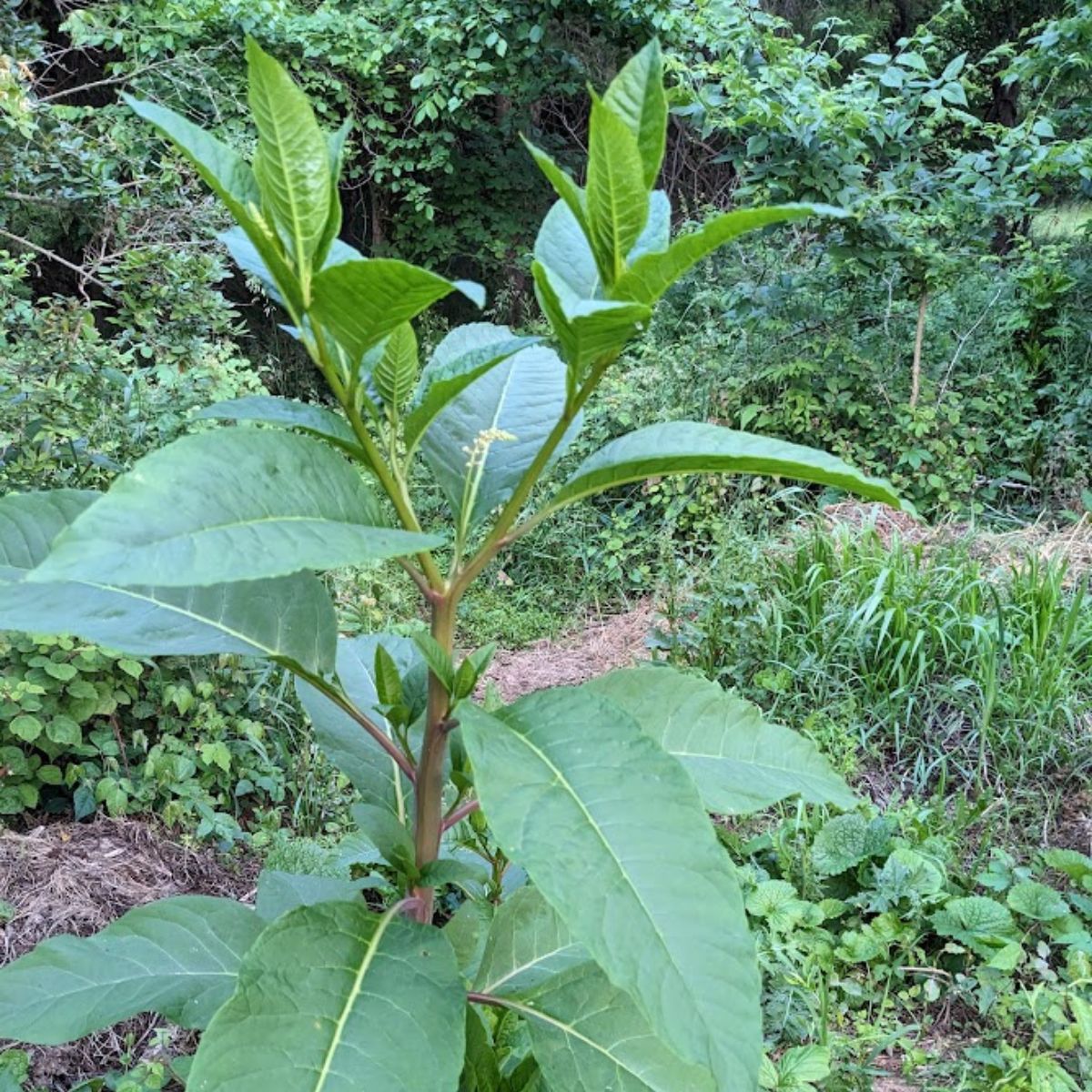
But first, let’s make sure you have identified the right plant.
Pokeweed Plant Identification
Pokeweed is a large, branching, herbaceous perennial that can grow up to eight to 10 feet tall. It has smooth, bright green, simple leaves arranged alternately on green stems that become a vibrant reddish purple as the season progresses. The leaves themselves can grow up to a foot long and four to seven inches across and give off an unpleasant odor when crushed.
Pokeweed seedlings

In spring, pokeweed seedlings emerge from overwintered taproots and from seeds spread by birds. These fresh green shoots don’t stay small for long, as pokeweed matures rapidly to reach its soaring height.
Pokeweed root
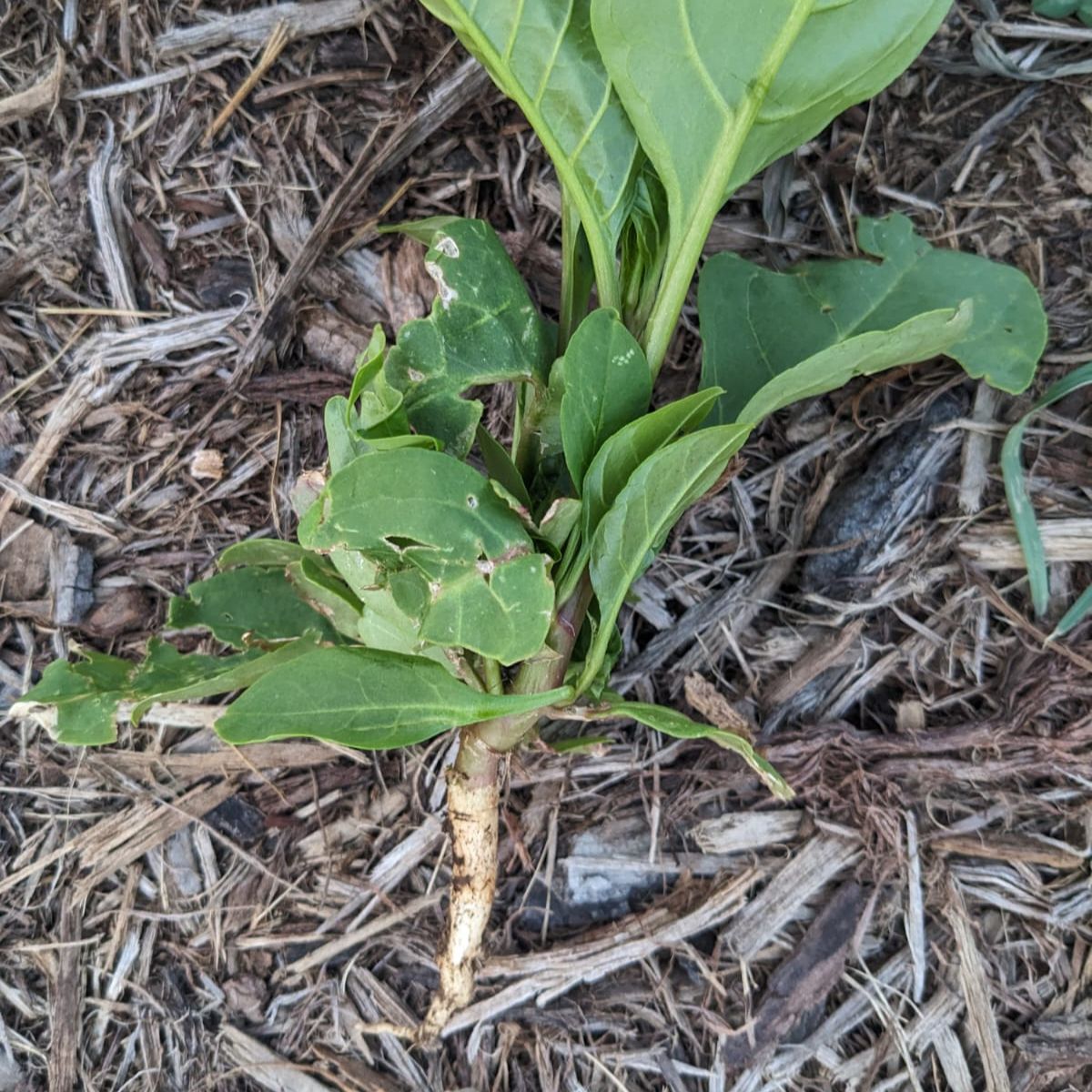
As its branches soar above most other herbaceous perennials, pokeweed also sends a large taproot down into the soil, anchoring the massive plant and providing nutrient stores to get it through winter dormancy and form seedlings in spring. This taproot can grow a foot deep and four inches wide, making removing it difficult.
Pokeweed flower
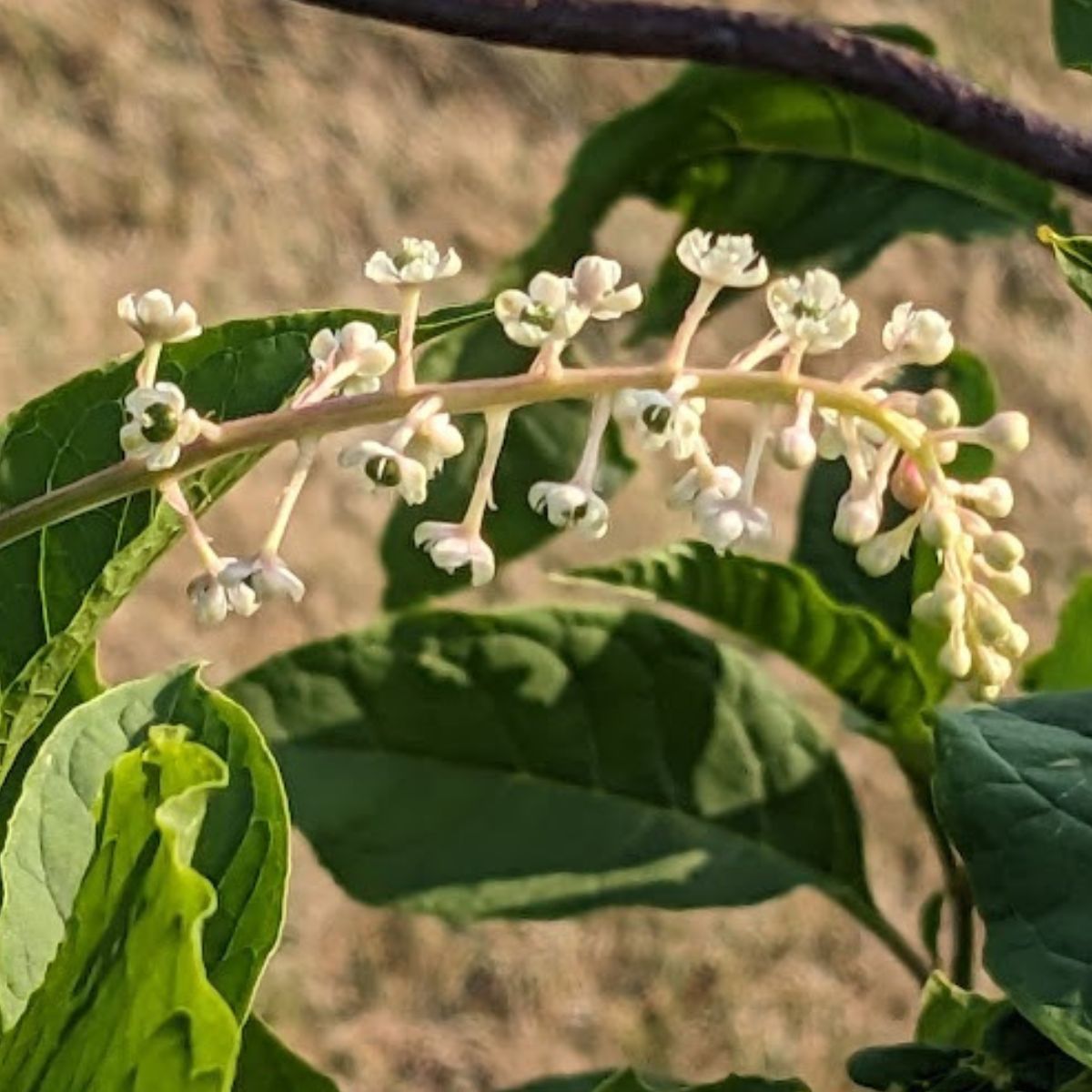
Tiny green to white flowers bloom midsummer on long racemes that curl at the end. These self-fertile blossoms each have five white sepals but no petals. Though erect when in bloom, they droop before fruit set.
Pokeweed berries
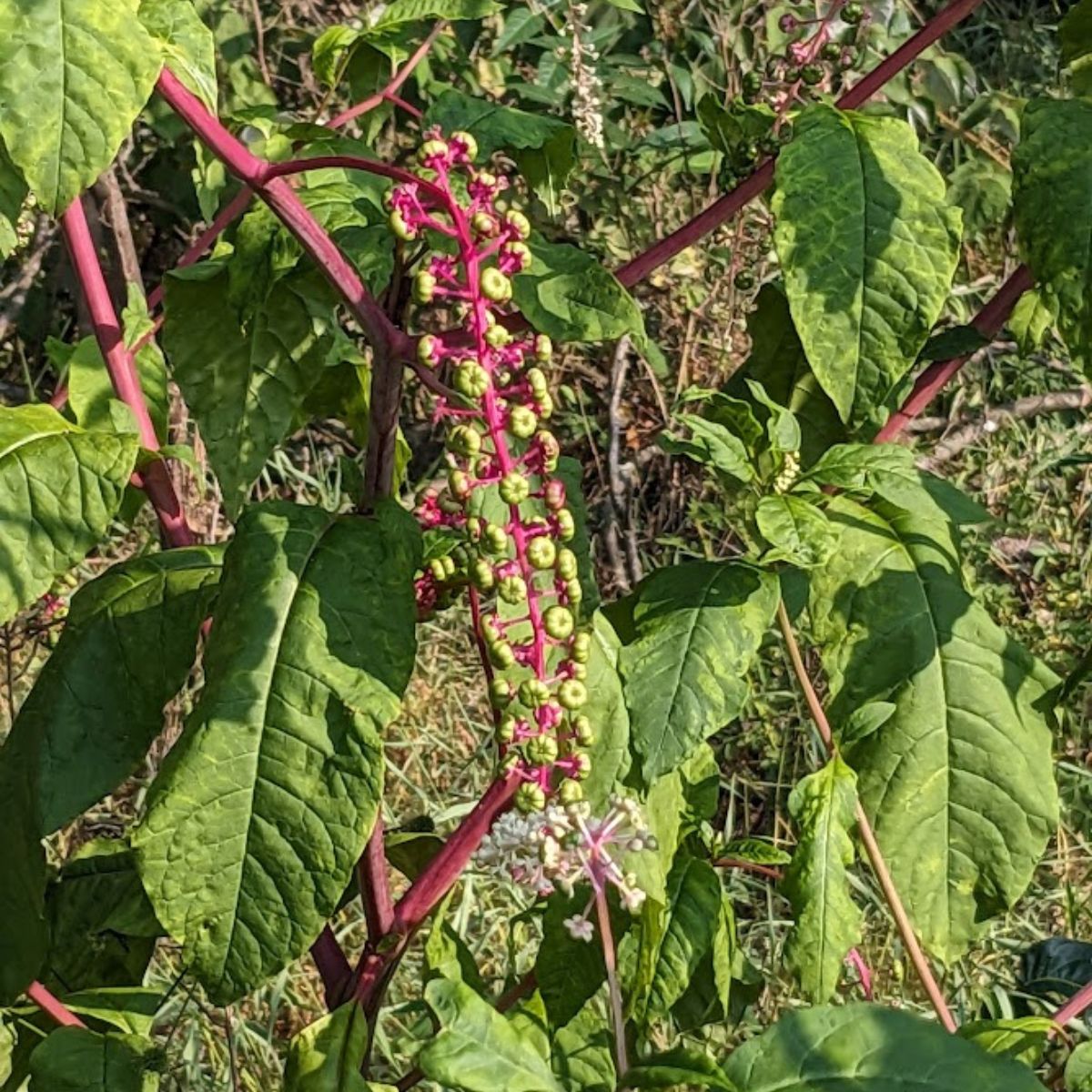
Pokeweed becomes most distinctive when fruiting. By late summer, its stems turn from green to bright reddish purple, and the flowers give way to clusters of dull green berries that ripen to a glossy purplish-black. These unique berries are often called pokeberries.
Are pokeweed berries poisonous?
Although pokeweed has a long history of decorative, medicinal, and culinary use, all plant parts are toxic to humans and pets. Pokeweed poisoning can occur if the plant is not properly prepared for consumption, causing severe intestinal distress or even death.
And while brushing up against the leaves shouldn’t cause any problems, contact with the sap can result in a red, itchy rash similar to a poison ivy or poison oak rash. To prevent a pokeweed rash, always wear gloves when handling pokeweed.
How to Get Rid of Pokeweed
If you live in the eastern United States, where pokeweed is native, you might consider letting pokeweed grow for the birds in less frequented parts of your property. After all, it is a very pretty plant! But if you live outside its native range or have curious children or pets, you will likely want to remove any pokeweed you find. Here are the two best methods for getting rid of pokeweed.
1. Hand pull or dig pokeweed
The best option for pokeweed control is to hand-pull seedlings early in the season before the plants have a chance to produce their countless seeds or long taproots. Try to do this the day after a good rain, when the moist soil will make the work easier.
For mature plants, dig deeply to remove the entire taproot, and bag up and dispose of any berries to prevent seed spread. Again, moist soil is your friend.
In the vegetable garden, cultivation is effective on new seedlings but not large, established plants, which will send up new shoots from the taproot still buried in the soil.
2. Use weed killer for pokeweed
Only use herbicide for pokeweed as a last resort, as it can cause harm to surrounding plants and wildlife as well as you. Unfortunately, vinegar and organic herbicides will not reach the taproot, but they may be effective on young seedlings, which haven’t yet had the chance to form a large root.
Choose a broadleaf herbicide labeled for your situation, and carefully follow the product instructions to apply to the foliage or cut stump of the pokeweed. Always wear gloves, long sleeves and pants, closed-toe shoes, and a mask when handling herbicides, and take care not to spray any nontarget plants.
Pokeweed might be a valuable food source for native birds or an invasive plant, depending on where you live.
Either way, this toxic plant poses a risk for young children and curious pets. If the risks outweigh the benefits of this striking plant in your yard, you will want to take action to get rid of pokeweed. Thankfully, pokeweed control is pretty straightforward. With the tips above, you should be able to easily remove pokeweed in lawn or garden spaces.
More Guides to Removing Noxious Weeds From your Yard
- how to get rid of Johnson grass
- how to get rid of buttercups in the lawn
- how to get rid of tree of heaven
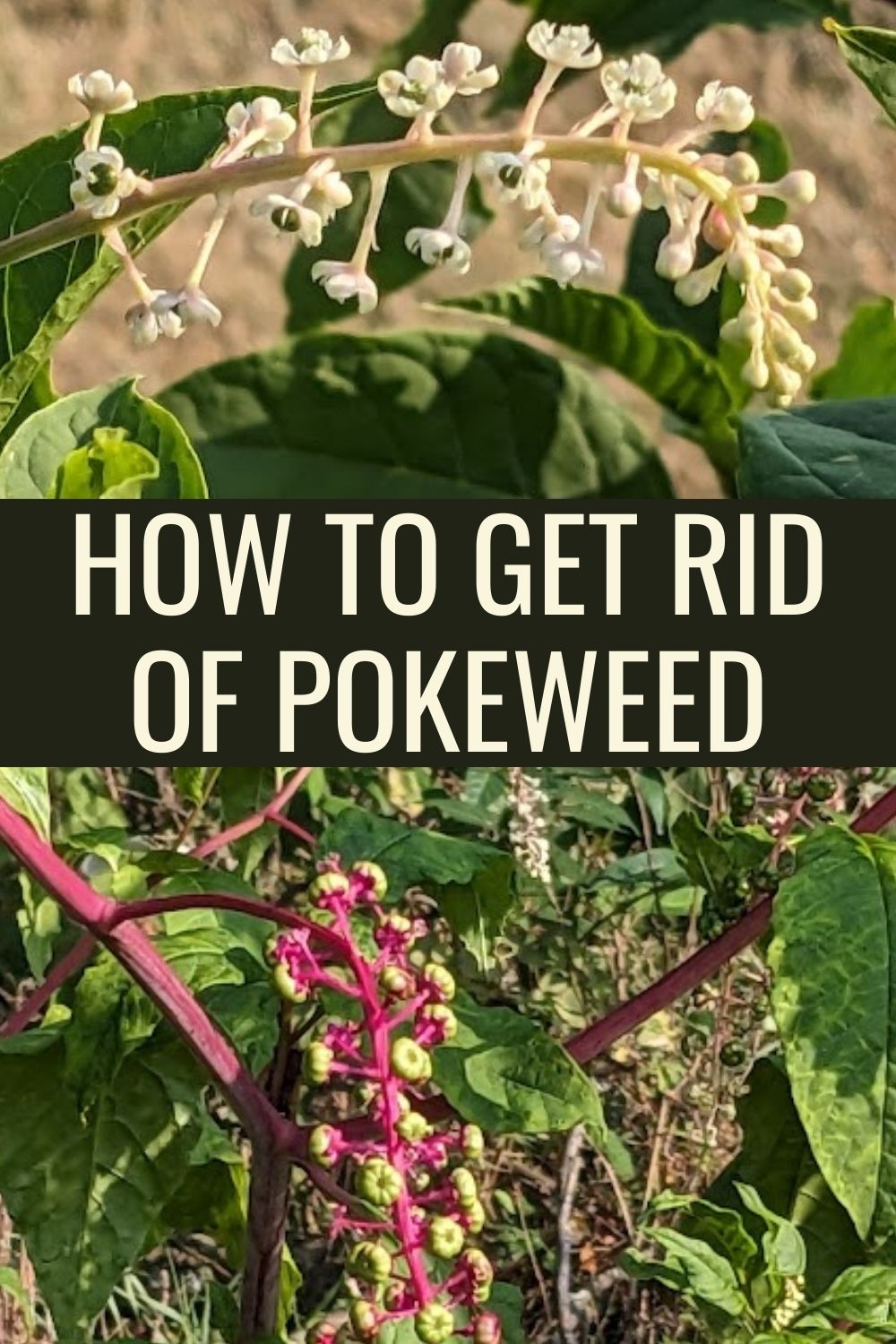

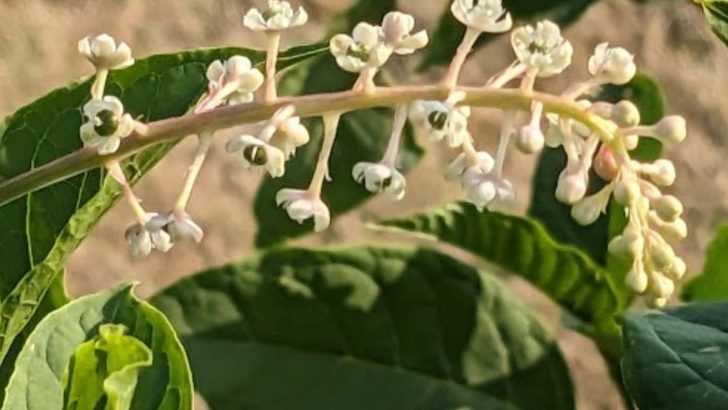


How To Get Rid Of Johnsongrass In The Garden And Lawn
Wednesday 26th of July 2023
[…] I planted a deer-resistant wildflower patch alongside our long driveway, and while the flowers are gorgeous, the entire flower lot is invaded by Jognshongrass and pokeweed. […]